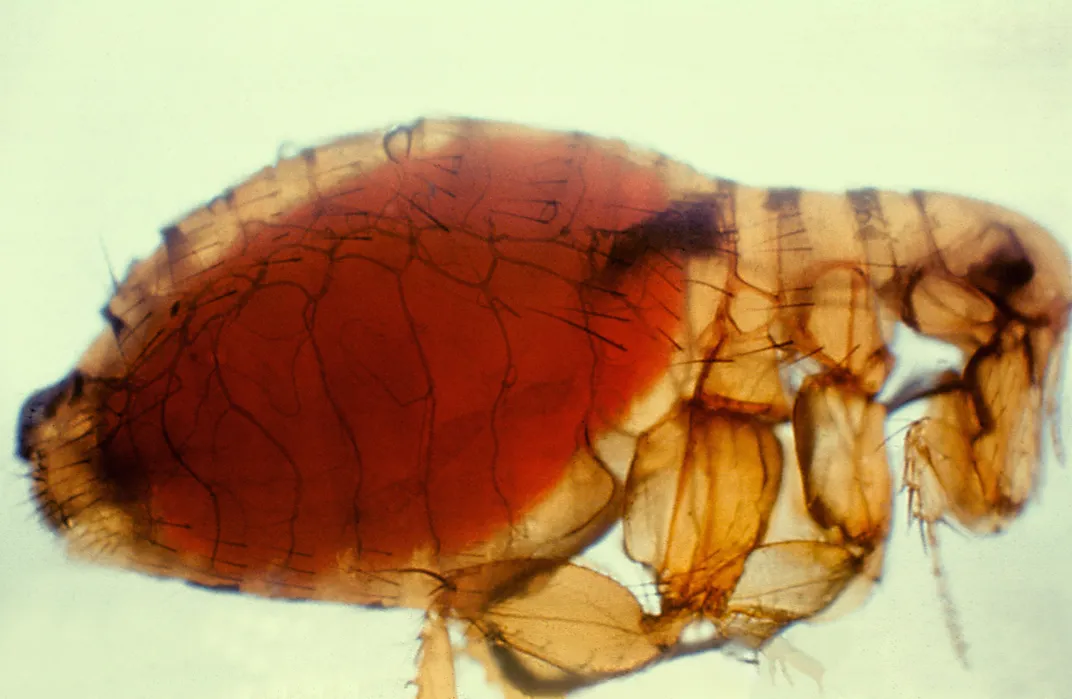Plague Pandemic May Have Been Driven by Climate, Not Rats
The bacteria responsible for the Black Death were reintroduced to Europe multiple times, possibly due to the changing climate
/https://tf-cmsv2-smithsonianmag-media.s3.amazonaws.com/filer/42/7a/427aeabc-f183-4d42-82ec-ee6f5a2ce621/42-64349469.jpg)
One of the greatest villains in the history of the plague may have been falsely accused. New evidence shows that the disease did not hide out in rats for centuries, as many have long thought. Instead, it's possible the disease was reintroduced to Europe multiple times following Asian climate events.
From 1347 to 1353, the Black Death swept across Europe, killing some 25 million people there and another 25 million in Asia and Africa. That was the beginning of what’s known as the second plague pandemic, a series of European epidemics of the disease that went on for hundreds of years. But plague is not naturally found in Europe. The disease is endemic to Asia, where the bacterium Yersinia pestis is found among small animals and their fleas. The prevailing story is that after the disease was introduced to Europe in the 1300s, Y. pestis found a new reservoir in the continent’s rats or wildlife, and those animals seeded fresh outbreaks.
But some scientists smell a rat. After all, while European wildlife didn’t disappear in the 19th century, plague outbreaks had largely ended by then, except in southeastern Europe near the Caucuses. That's not linked to medical advances, which actually can't do much to halt the initial spread of plague from animals to people. Also, black rats were rare in northern Europe during the second pandemic, but those regions were not spared from the spread of the disease.
Plague “could have been spread by people and transmitted by droplets. It could also have been spread by dormant fleas in cloths from people,” notes Nils Stenseth of the University of Oslo.
In places where plague is found naturally, the bacterium is prevalent among wild rodents, such as gerbils. Most of the time, it has no problem finding hosts among the rodent population and their fleas. But when climate conditions become warmer and wetter, rodent numbers drop, so the fleas seek out alternate hosts like domestic animals—and humans. Even today, that cycle causes outbreaks of plague in Asia.

In their study, published today in the Proceedings of the National Academy of Sciences, Stenseth and his colleagues examined European and Asian climate fluctuations recorded in tree ring data, along with a dataset of more than 7,700 historical plague outbreaks. They could find no links between European climate and the disease, but there were some intriguing correlations between climate fluctuations in the Karakorum Mountains in northern Pakistan between 1250 and 1850 and plague outbreaks at European port cities: About 15 years after climate turned unfavorable for the mountain rodents, plague sometimes showed up at a European harbor.
The 15-year delay may seem like a long lull, and it would be for modern society. But it accounts for the slow movement of people and animals in past times. Following a dry period, it would take a year or two for the rodent population to crash and fleas to come into contact with the human population in Asia. Then the disease would need to travel some 2,500 miles to Europe, covering about 200 to 250 miles per year.
That rate is in line with how fast plague is known to have traveled across the landscape during past pandemics—faster than what was seen in China during the third pandemic, but slower than Europe during the Black Death years. Caravans traveling across Asia could have transported the plague along trade routes, assisting the spread of the disease across large, unpopulated areas, the team suggests. The final years in the timeline would then account for the arrival of plague in harbor cities and the spread of the disease across Europe.
The scientists will need more data to prove that Asian climate was responsible for all the reintroductions of plague to Europe. For instance, analysis of plague DNA from European victims who died at different time periods could strengthen the link between climate and outbreaks. “If our theory of climate-driven successive reintroductions is correct, we would expect to find great genetic bacterial variation between plague victims across time,” Stenseth explains. If the bacteria had instead come from a single introduction, there would be less genetic variation in the pathogen’s DNA, even when taken from victims from different times and locations.
The new theory also does not exonerate rats from the plague story. The rodents likely played a role in sparking outbreaks on ships at sea, as well as in moving the disease between harbors, the researchers note. Instances of quarantining ships—a practice developed in the 14th century in response to the Black Death—could have saved at least a few port towns during the centuries of the second pandemic.
But even with rats playing only a supporting role, other characters in the plague story may have to change roles. Many have praised cats for keeping the plague at bay, and they blamed the Catholic Church for its superstitious cat eradication rampage. If rats weren’t so important to the plague story, though, then cats probably weren’t either.
/https://tf-cmsv2-smithsonianmag-media.s3.amazonaws.com/accounts/headshot/Sarah-Zielinski-240.jpg)
/https://tf-cmsv2-smithsonianmag-media.s3.amazonaws.com/accounts/headshot/Sarah-Zielinski-240.jpg)